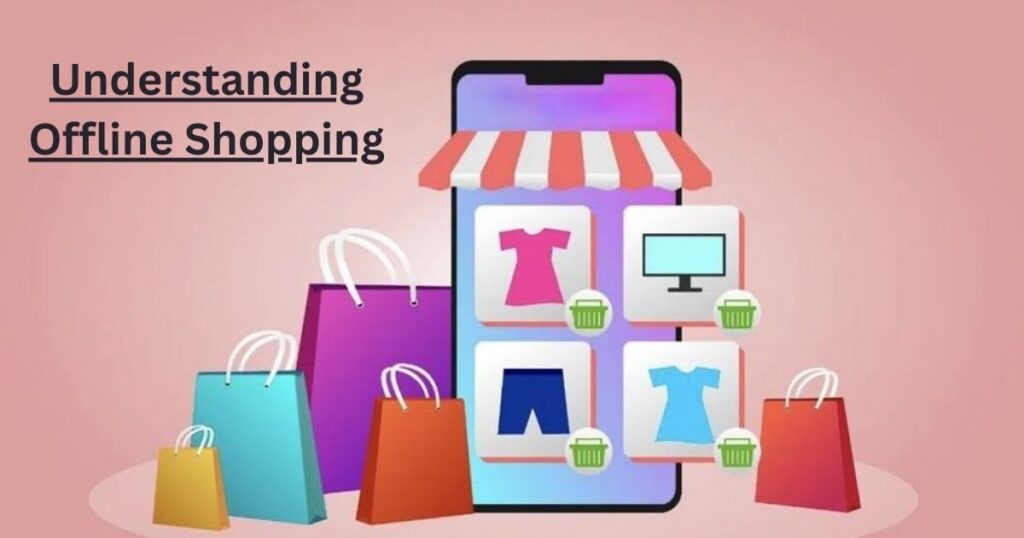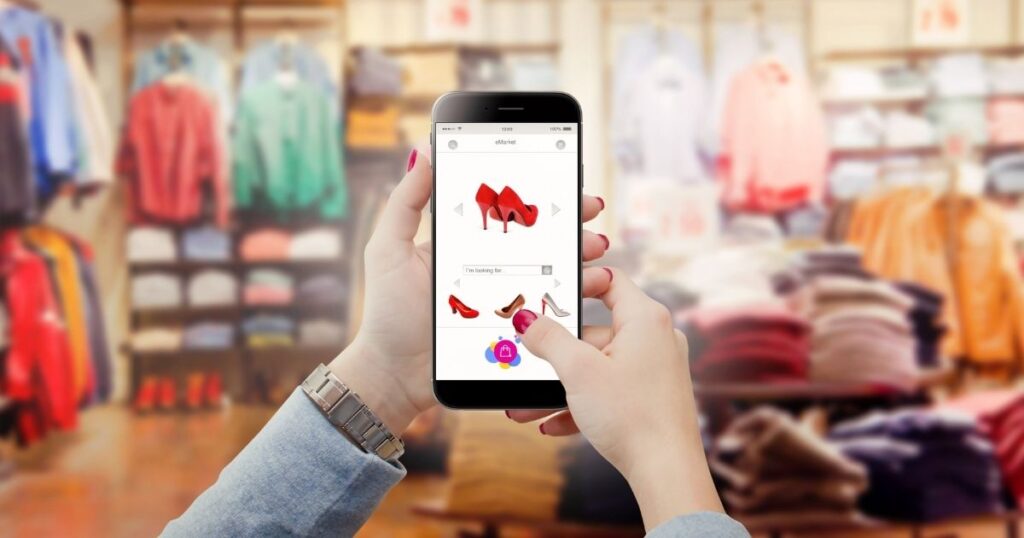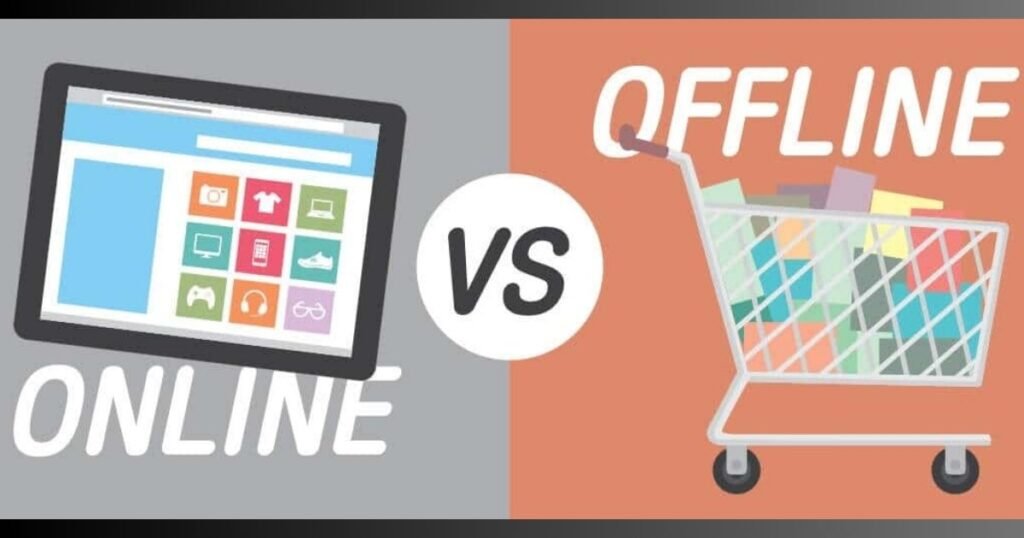Shopping has evolved dramatically in recent years. The main question isn’t just about where to shop anymore – it’s about choosing between scrolling through your phone or walking through store aisles. The short answer? Both online and offline shopping have their place, depending on what you’re buying and when you need it.
The Current Shopping Landscape
The way we shop has transformed completely since 2020. With smartphones in our pockets and next-day delivery becoming the norm, more people are turning to online shopping for convenience. Yet, physical stores still hold their ground, especially when we want to try before we buy or need something immediately.
India’s retail scene perfectly showcases this evolution. Local markets and modern malls now compete with e-commerce giants, giving shoppers more choices than ever before. This blend of traditional and digital shopping creates a unique ecosystem where consumers can choose the best of both worlds.
Statistics of Online vs Offline Shopping in India
Recent data shows fascinating trends in Indian shopping habits. E-commerce in India grows by 50-60% annually, with online retail claiming 10% of all e-commerce activities. This growth isn’t just numbers – it represents a fundamental shift in how Indians shop.
Consumer behavior studies reveal that 80% of Indian shoppers prefer online platforms, particularly appreciating flexible return policies. This preference doesn’t mean physical stores are dying – instead, they’re evolving to offer unique experiences that online shopping can’t match.
Global trends reflect similar patterns. E-commerce sales worldwide reached significant milestones in 2023, with online platforms accounting for 19% of total retail sales. Experts predict this figure will hit 22% by 2027, showing steady but sustainable growth.
Online Shopping Explained
Think of online shopping as having the world’s biggest mall in your pocket. You browse through virtual aisles, compare prices across multiple stores instantly, and check reviews from other buyers – all while sitting on your couch.
Modern online shopping platforms offer everything from daily essentials to luxury items. They’ve mastered the art of personalization, showing you products based on your interests and past purchases. This convenience comes with features like saved wishlists, price drop alerts, and one-click ordering.
The Evolution of Online Shopping
Remember when ordering online seemed like science fiction? Let’s explore how shopping evolved from catalog orders to one-click purchases, transforming from a novelty into our daily routine.
1980s: The Foundation Years
Michael Aldrich’s Radiophone Office Revolution marked the beginning. This system wasn’t just about selling products – it revolutionized how businesses could connect electronically. Think of it as laying the first brick in what would become the e-commerce empire.
1994: Digital Transformation
The introduction of secure online transactions changed everything. NetMarket and Internet Shopping Network pioneered safe online purchasing, making people comfortable with digital payments. This was when online shopping started feeling less like science fiction and more like reality.
1995: The E-commerce Boom
Amazon and eBay launched, forever changing retail. These platforms didn’t just sell products – they created new ways of shopping. They showed that online stores could offer more variety than physical ones, while building trust through customer reviews and reliable service.
Pros of Online Shopping
Shopping from your screen brings game-changing advantages. The most obvious benefit? Freedom from time constraints. Whether it’s midnight or early morning, your favorite stores remain open in the digital world.
Price comparison becomes effortless online. Instead of driving between stores, you can open multiple tabs and find the best deals within minutes. Many online platforms also offer price tracking tools, alerting you when items go on sale.
The selection online feels endless. Physical stores can only stock so much, but online retailers offer vast catalogs. Looking for a rare book or specific gadget model? Online marketplaces likely have it, often with detailed product descriptions and customer reviews to help you decide.
Cons of Online Shopping
Not everything about online shopping is perfect. The biggest drawback? You can’t touch, feel, or try products before buying. That stylish shirt might look different in person, or those shoes might not fit quite right.
Delivery issues can frustrate even the most patient shoppers. While many retailers offer fast shipping, delays happen. Weather problems, logistics issues, or high demand during sales events can leave you waiting longer than expected.
Security concerns remain valid in online shopping. Despite advanced encryption and secure payment gateways, online fraud exists. It’s crucial to stick with reputable websites and watch out for deals that seem too good to be true.
Understanding Offline Shopping

Traditional brick-and-mortar stores offer a shopping experience that screens can’t replicate. Walking into a store engages all your senses – you can touch fabrics, try on clothes, test electronics, and even smell perfumes before buying.
Physical stores excel at immediate gratification. Need a last-minute gift or running low on groceries? Local stores solve these problems instantly. Plus, face-to-face interaction with knowledgeable staff can provide valuable insights about products.
The social aspect of offline shopping shouldn’t be underestimated. Shopping with friends or family becomes an enjoyable activity, not just a transaction. Many people find joy in the traditional shopping experience, from window shopping to trying on clothes.
Pros of Offline Shopping
Instant possession tops the list of offline shopping benefits. Once you pay, the item is yours – no waiting for delivery or tracking shipments. This immediate ownership particularly matters for urgent purchases or when you need to try items before important events.
Physical stores offer genuine customer service experiences. Having real conversations with knowledgeable staff helps make better decisions. They can demonstrate products, suggest alternatives, and solve problems on the spot.
Returns and exchanges happen smoothly in physical stores. No need to repack items, print shipping labels, or wait for refunds. Simply bring the item back to the store for immediate resolution.
Cons of Offline Shopping
Traditional shopping demands more time and effort. Fighting traffic, finding parking, and waiting in checkout lines can turn a simple purchase into a time-consuming task. During peak shopping seasons or sales, these challenges multiply.
Limited operating hours restrict shopping flexibility. Unlike online stores, physical shops close at night and might have reduced hours on weekends or holidays. This can complicate shopping for busy professionals or people with irregular schedules.
Stock limitations affect offline shopping experiences. Physical stores can only display and stock so many items. If your size or preferred color isn’t available, you might need to visit multiple locations or wait for restocking.
Making the Right Choice
The best shopping method depends on various factors. Consider what you’re buying, when you need it, and how important physical inspection is. High-value items or products requiring precise fit might warrant in-store visits, while routine purchases work well online.
Smart shoppers often combine both methods. Research products online, read reviews, and compare prices, then visit stores to examine items in person. This hybrid approach maximizes the benefits of both shopping styles.
The Rise of Mobile Shopping
Mobile shopping transforms how we browse and buy. Apps and mobile-optimized websites make purchasing as simple as a few taps. Statistics show that 187 million Americans now shop through their phones, proving smartphones have become our personal shopping assistants.
Payment technology advances make mobile shopping safer and more convenient. Digital wallets, UPI systems, and secure payment gateways let shoppers complete transactions confidently. The ability to save payment information securely makes repeat purchases effortless.
Mobile shopping also brings personalized experiences through AI-powered recommendations. Apps learn your preferences over time, showing products you’re likely to love and alerting you to relevant sales.
Security and Safety in Modern Shopping
Worried about shopping safety? You’re not alone. Whether you’re typing in card details or swiping at stores, understanding modern security measures helps you shop with confidence.
Online Security Measures
Modern e-commerce platforms invest heavily in security. Two-factor authentication, encrypted payments, and secure servers protect your data. Still, smart shoppers should use strong passwords and shop only on trusted websites.
Regular security updates and fraud detection systems work behind the scenes. Many online retailers offer buyer protection programs, ensuring you get what you pay for or get your money back.
Physical Store Safety
Traditional stores focus on different security aspects. CCTV cameras, trained staff, and secure payment terminals protect shoppers. Cash transactions remain safe in physical stores, though many now offer contactless payments too.
Impact on Consumer Behavior
Shopping habits have evolved dramatically. People now research products extensively before buying, regardless of where they’ll make the purchase. This informed approach helps consumers make better decisions.
The pandemic accelerated existing trends toward digital shopping. Many who previously avoided online shopping now embrace it, while still appreciating traditional store visits for certain items.
Cross-channel shopping becomes increasingly common. Consumers might browse online, try items in stores, then purchase wherever offers the best deal or convenience.
Environmental Considerations
Ever wondered about your shopping footprint? From delivery trucks to excess packaging, our buying habits impact the planet. Let’s explore how different shopping methods affect our environment.
Online Shopping Impact
E-commerce affects the environment through packaging and delivery emissions. However, many retailers now use eco-friendly packaging and optimize delivery routes to reduce their carbon footprint.
Some studies suggest online shopping can be greener than traditional retail when consumers would otherwise drive to multiple stores. Consolidated deliveries often prove more efficient than individual shopping trips.
Physical Store Environmental Factors
Traditional stores consume energy for lighting, heating, and cooling. Yet they often require less packaging than online purchases and can reduce delivery-related emissions when customers shop locally.
Making Smart Shopping Choices

Feeling overwhelmed by options? Smart shopping isn’t about choosing online or offline – it’s about knowing when to use each. Learn to make choices that save time and money.
For Everyday Items
Regular purchases like groceries and household items often work well with a mixed approach. Set up automatic online deliveries for non-perishables, but visit local stores for fresh produce and immediate needs.
Many shoppers save time by ordering groceries online for pickup, combining digital convenience with the ability to inspect fresh items personally.
For Special Purchases
Big-ticket items deserve extra consideration. Research extensively online, reading reviews and comparing prices. Then visit stores to examine items personally before deciding where to buy.
Tips for Better Shopping Experiences
Want to become a savvier shopper? These practical tips help you navigate both digital and physical stores like a pro, maximizing value while minimizing hassles.
Online Shopping Tips
- Create wishlists to track prices over time
- Read reviews carefully, focusing on verified purchases
- Check return policies before buying
- Use secure payment methods
- Save favorite items for later during sales seasons
Offline Shopping Tips
- Visit stores during off-peak hours
- Join loyalty programs for better deals
- Check store inventory online before visiting
- Take advantage of in-store expert advice
- Compare prices online while in stores
Future of Shopping
Retail continues evolving with technology. Augmented reality lets online shoppers virtually try products, while physical stores integrate digital features for seamless experiences. The future likely holds more blending of online and offline shopping methods.
Some stores now offer “click and collect” services, combining online convenience with physical store reliability. Order online, then pick up items from nearby stores – often within hours. This hybrid model shows how retail adapts to changing consumer needs.
Read More Blogs and Updated visit trendoxygen.
FAQ’s
Which is better – online or offline shopping?
Neither is universally better. It depends on your needs:
| Online Shopping Best For | Offline Shopping Best For |
| Convenience | Trying items in person |
| Price comparison | Immediate purchases |
| 24/7 shopping | Personal assistance |
| Wider selection | Social experience |
Benefits of offline shopping:
- See and touch products
- Instant purchase
- Face-to-face help
- Try before buying
- No delivery wait
- Cash payment option
Online Shopping Pros vs Cons:
| Advantages | Disadvantages |
| 24/7 access | Can’t try items |
| Shop from home | Delivery delays |
| More choices | Return hassles |
| Easy price comparison | Shipping costs |
| Better deals | Security risks |
Offline Shopping Pros vs Cons:
| Advantages | Disadvantages |
| Try before buying | Limited selection |
| Immediate purchase | Travel required |
| Expert help | Crowded stores |
| Social experience | Higher prices |
| Cash payment | Time consuming |
Risks of offline shopping:
- Impulse buying
- Missing online deals
- Strict return policies
- Cash theft risk
- Limited stock
- No price comparison
Final Thoughts
The choice between online and offline shopping isn’t really a competition – it’s about finding the right balance for your needs. Both methods have evolved to offer unique advantages, and smart shoppers use both effectively.
Consider each purchase individually, weighing factors like urgency, need for physical inspection, price comparison possibilities, and convenience. The best approach often combines both methods, using each for what it does best.
Remember that shopping preferences can change over time. Stay flexible and open to new shopping methods as technology and retail continue to evolve. The future of retail likely holds even more innovations that will further blur the lines between online and offline shopping.
Hi,
Welcome to the trendoxygen.com, Stay with us for more on trendoxygen.


